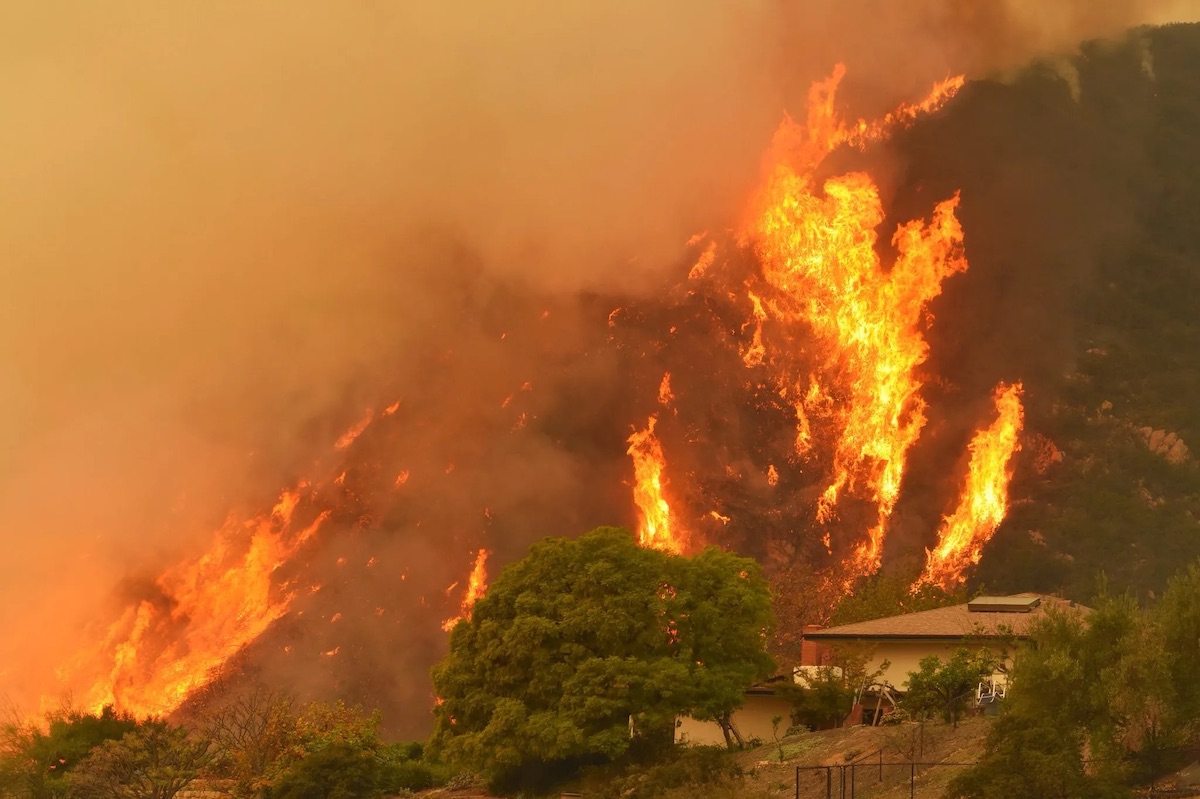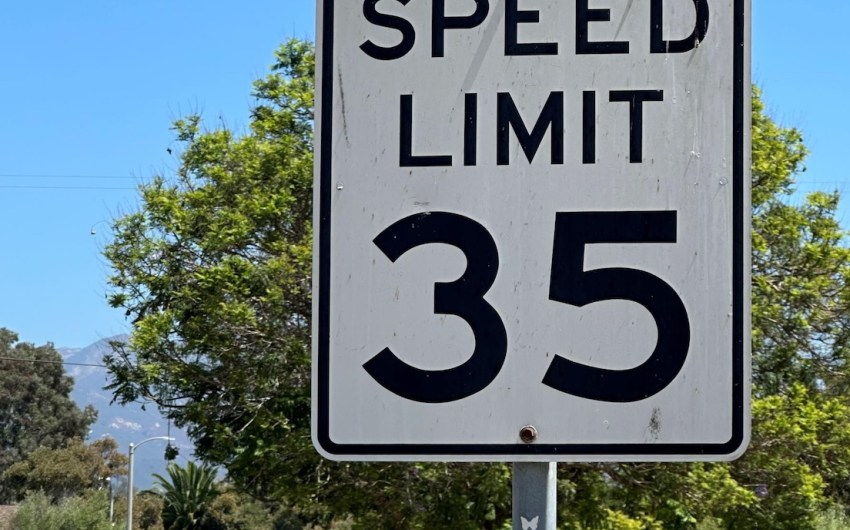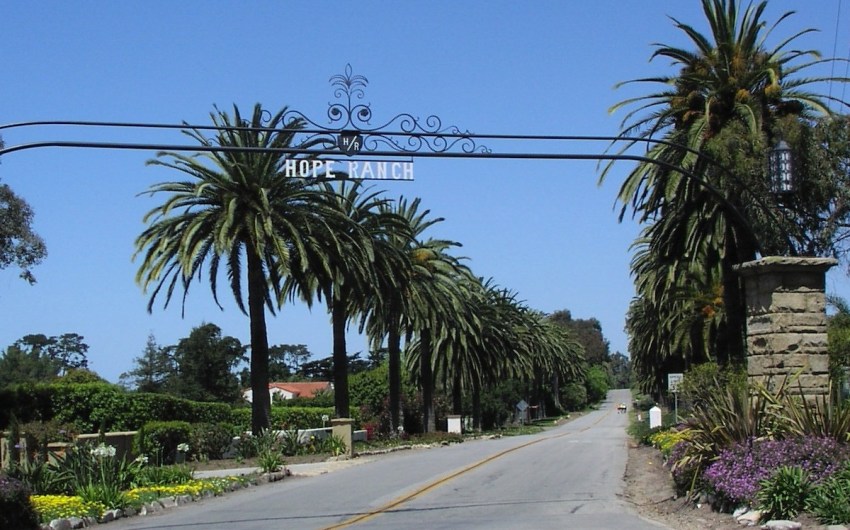Santa Barbara Supervisors Discuss Ways to Keep Fire at Bay
Goodbye, Geraniums, and Gardens Against the House Have to Go

Mark Hartwig commiserated with Joan Hartmann over the loss of plantings that soften the lines of a house during Tuesday’s Board of Supervisors hearing on power shutoffs. The fire chief and the Santa Barbara County supervisor’s conversation came amid a discussion that included California’s new “Zero to Five” defensible space zone — homeowners in wildfire areas should keep the greenery five feet away from outer walls.
Hartwig said he had to stop a couple of feet short when it came to the geraniums growing at his house. And Hartmann said she’d seen the research as a boardmember of the Fire Safe Council. “It’s painful. I’ve put in all these plants because they soften the house,” she said. “I have to admit, I haven’t taken them all out, but I’ve cut them way back.”
Drought or no drought, fires still broke out, either because the grass grew tall or the fuels underneath grew drier, said Garrett Huff, a division chief with Santa Barbara County Fire. “It looks green on the outside, but there’s a lot on the inside that’s like kindling.”
The same is true of homes that haven’t been hardened against fire. “Wood chips and shrubbery are what catch homes on fire in the wildland-urban interface,” Huff explained. Homes on the edge of grasslands or the forest need to be able to withstand a fire on their own. “A fire engine may not be able to sit there to defend a home, so the more people do to prepare, the better the outcome will be,” Huff said. Kelly Hubbard, the county’s emergency manager, added that insurance companies were also looking at a cleared Zero-to-Five Zone in renewing or canceling policies.
County Fire’s annual inspections of rural-urban neighborhoods were only half complete when Lake Fire broke out, but 99.7 percent of that half passed on the first pass, Huff said. “This is very good news that people are taking defensible space so seriously.” Taken together, the defensible space zones reach to 100 feet beyond a home to keep grass and bushes low or well trimmed, and trees limbed up.
During the update, SoCal Edison’s wildfire planner Bob Steins said the utility has installed covered conductors, a change from bare wires, in 5,700 miles of its territory, 100 of them in Santa Barbara County. As for shutoffs, last year one or two were considered, but were avoided, he said.

In PG&E territory, a new acronym — EPSS, for Enhanced Powerline Safety System — represented a more sensitive power-down setting in fire-inducing conditions. Eric Daniels of PG&E — which paid $45 million in penalties for 2021’s Dixie Fire and as much as $13 billion to settle fire claims from 2017 and 2018 — explained that this was a defensive measure in fire-prone areas. “They may become more frequent, but they provide safety for the public by preventing sparks in grassy, dry areas,” Daniels said. Crews are sent to re-energize the line after an inspection, which can take time. Losing power can be a calamity for anyone at home and dependent on electricity-powered medical equipment. Both PG&E and Edison have resources for customers with additional needs. Bradlee Kirkman with the Independent Living Resource Center told the supervisors that the ILRC would also help people sign up for services with either utility.

Hartmann, whose 3rd District is suffering the majority of the Lake Fire, asked her colleagues if the county should consider a fuels reduction assessment district, which Marin County has put in place. “You have to consider, 85 percent of fires start along the roadside,” she said. “We need to get ahead of this somehow.”
For his part, Hartwig agreed, saying his agency had been dubious about a fuels crew, which was funded by hard-to-get grants, but they proved their value. “We should do more,” Hartwig said. “It may be a matter of reallocating resources.”
With a second from Supervisor Das Williams, Hartmann asked county staff to return on a future date to look at a special benefit district.
Going forward into the summer, residents want to stay informed, Hubbard suggested. Go to ReadySBC.org to make sure to receive alerts. Not every household is registered with a utility: mobile homes and renters, for instance, she said. As many as five addresses can be signed up, and keep it updated. Assistance through 2-1-1 is available for registration.
County resources include:
• Solar and hydrogen trailer for charging devices during an extended outage. A second is available in North County.
• Supply caches in isolated areas like Cuyama and Guadalupe.
Be prepared:
• Have an evacuation plan, and know your escape routes.
• Have an emergency kit, and rotate the water supply and granola bars.
• Get to know your neighbors and if they might need help, such as children, elderly, or disabled persons.
Aside from consulting their mother or checking Facebook, Hubbard said, residents may find the county pushing an emergency notification through loudspeakers, door knocks, emergency alerts via cell phone, or phone call to land lines.
Th graphic below lists the social media sites where the county posts emergency information:

Premier Events
Fri, Dec 27
6:00 PM
Solvang
New Year Disco Ball Paint & Sip
Fri, Dec 27
9:00 PM
Santa Barbara
Film Screening: “Indiana Jones and The Last Crusade”
Sat, Dec 28
7:00 PM
Lompoc
Rosie Flores & Grey DeLisle + Special Guests LIVE
Sat, Dec 28
7:00 PM
Carpinteria
Family Comedy Night at The Alcazar
Sat, Dec 28
7:00 PM
Santa Barbara
The Temptations at Casa De La Raza
Sat, Dec 28
9:00 PM
Santa Barbara
Film Screening: “Indiana Jones and The Last Crusade”
Tue, Dec 31
5:00 PM
Santa Barbara
New Year’s Eve Dinner
Tue, Dec 31
6:00 PM
Santa Barbara
Gin + Jazz New Year’s Eve Celebration at El Encanto
Fri, Jan 03
6:00 PM
Santa Barbara
Flow’s 1st Friday Tea Social- Stuff Swap
Sun, Jan 05
7:00 PM
Santa Barbara
Jazz at the Lobero: Robert Glasper
Fri, Dec 27 6:00 PM
Solvang
New Year Disco Ball Paint & Sip
Fri, Dec 27 9:00 PM
Santa Barbara
Film Screening: “Indiana Jones and The Last Crusade”
Sat, Dec 28 7:00 PM
Lompoc
Rosie Flores & Grey DeLisle + Special Guests LIVE
Sat, Dec 28 7:00 PM
Carpinteria
Family Comedy Night at The Alcazar
Sat, Dec 28 7:00 PM
Santa Barbara
The Temptations at Casa De La Raza
Sat, Dec 28 9:00 PM
Santa Barbara
Film Screening: “Indiana Jones and The Last Crusade”
Tue, Dec 31 5:00 PM
Santa Barbara
New Year’s Eve Dinner
Tue, Dec 31 6:00 PM
Santa Barbara
Gin + Jazz New Year’s Eve Celebration at El Encanto
Fri, Jan 03 6:00 PM
Santa Barbara
Flow’s 1st Friday Tea Social- Stuff Swap
Sun, Jan 05 7:00 PM
Santa Barbara























You must be logged in to post a comment.